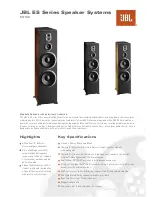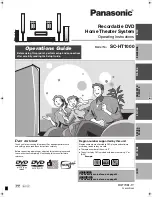
Grounding Your Case
If you are powering your SRE330 project with an internal mains transformer then you will need to
earth your case directly. This is covered in more detail in the section “Using a Mains Transformer”
later in this document. If, however, you are powering your case from a wallwart or linelump power
supply, the 0V reference point in the SRE330 will be floating with respect to the mains earth. The
0V will then only be 'tied' to mains earth or ground when you connect your audio cables to your
studio system.
It is a good idea to connect the metal casing of your project to 0V. This helps keep unwanted signal
interference to a minimum. There are variety of ways that the case can be connected to 0V and I
have found the best way is to use the sleeve connections of the input and output sockets. Linking R1
on the issue 1 SREIO board, or LK4 on the issue 2 SREIO board, connects all the sleeve
connections to the 0V that comes from the SRE330 main board. The sleeve connection on each
socket is directly bonded to the threaded bush of the 114BPCX socket. Since these are securely
fixed to the case this should mean that the case is also now connected to 0V. To ensure a good
connection I use toothed shakeproof washers between the sockets and the inside surface of the rear
panel.
The rear panel's mounting screws should then allow the rest of the case to also be connected to 0V.
However, this does depend on the type of case, whether it is painted, how it is constructed and so
on. It is worth therefore measuring the resistance between parts of the case. If you have no
connection, ie. you have a resistance over 10K, between the lower panel and the rear panel it will be
worth fitting a wire link in the LK position on the RPSU board. This should tie the RPSU's 0V to
the lower panel via the top right hand mounting screw on the RPSU and all the pot brackets on the
SRE330 main board via pin 5 of the PS1 connector. How effective it is will depend on how well
connected the top right mounting screw is to the bottom panel and how well the pots make contact
with the front panel. You may need to scrape any paint from the relevant areas to allow the
mounting screw or pot nuts to make good contact.
One has to a little careful when using the word 'ground'. I sometimes talk about local ground and 0V
as being the same thing. This is technically incorrect but it is used a lot. I worked at Marconi in the
80s and Soundcraft in the early 90s, and ground and 0V were used interchangeably even by
seasoned engineers. We'd talk about chassis ground, dirty ground, signal ground and clean ground.
They'd all be connected to 0V somewhere in the system but the term ground was in common usage.
Ground, when used in this way, is then a local common reference connection tied to the 0V of the
unit's power supply. It is not the same as mains earth. Indeed, it may not even be tied to mains earth
in the unit in question.
Strictly speaking, electrical ground is mains earth and historically it was solely referred to as that,
but usage, incorrect or not, has meant a shift in the meaning. Ideally, we should call our common
reference connection within our unit as 0V and not use the term ground.











































